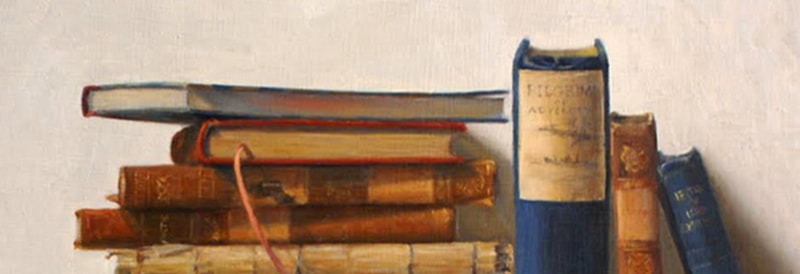A still life painting refers to a work of art that typically depicts inanimate objects. You can do a still life painting of your favourite household objects or any object that really intrigues you.
Once you have selected the subject to do a still life painting, you must think about the story you want to tell. Do you want to portray history or do you want to convey a certain emotion? That story will help you to come up with a suitable title for your painting.

The setup
Lighting

A still life painting requires a consistent light source to render the form of different objects with shadows and highlights. Avoid any secondary ambient light as it will create conflicting shadows or reflections, which will make it difficult to understand what is really going on. You can use cardboard panels to block off the ambient light.
For right-handed artists, it is best if the light pours in from the left side as shown in the above image. The reverse is true for left-handed artists.
Horizon

When it comes to still life, the horizon is not the point where the earth meets the sky, rather it is the sightline of the viewer. With the objects placed on the table, we get to decide how much of the surface will be visible to influence the ‘story’. The same setting when viewed from above can be used to focus on the space between the objects. When viewed from the table line, you will notice the objects on the table more. Boxes can be used to raise the objects to eye level.
Planning the composition
Atmosphere

Ask yourself what kind of a mood you want your setting to reflect. Low-key paintings that are predominantly dark will help you create a sombre mood. High-key paintings will invoke a happier emotional response or a feeling of innocence. Always think of the impact your background has on the final outcome.
Drama

Ideally, one part of your painting will be the ‘hero’ or the part that will stand out. It is important to note that a strong focal point will draw the viewer in and start the conversation. You can pick anything as your focal point – it can be a dramatic reflection or another interplay between objects.
Objects

Gather all the objects you need in the portrayal of your story and then place them all on the table. Move them around and then decide the best location to place them.

Once you have noted what works best in your frame, adjust the elements and put it together. In the case of the painting below, it is the marble.
It does take a lot of patience to get good at still life painting but it will be worth it!
Did our tips help you to set up your still life painting?
Share your experience with us in the comments below.
Leave a comment

Comment added
Comment updated
Comment deleted
More inspiration
“
“Art heals all my feels.”




